There are many benefits to growing your own tomatoes from tomato seeds! Growing tomatoes from store-bought tomatoes is a surprisingly simple way to start your own home garden. With just a few easy steps, you can have delicious homegrown tomatoes ready for harvesting in as little as six months! From knowing when to plant the seeds to understanding the best soil conditions, this blog post will walk you through everything you need to know about how to successfully grow tomatoes from tomato seeds.
Health Benefits Of Tomatoes
Tomatoes are a great source of many vitamins and minerals, including vitamin C, potassium, folate, and vitamin K. They are also rich in antioxidants, such as lycopene. Here are some of the health benefits that come from eating tomatoes:
- Improved Heart Health: Tomatoes contain high levels of lycopene which has been linked to lower levels of LDL cholesterol (the “bad” kind) and improved heart health.
- Reduced Risk Of Cancer: Lycopene is known to have cancer-fighting properties, and studies have found that people who eat more tomatoes may have a lower risk of certain types of cancers.
- Better Skin Health: The antioxidants in tomatoes can help reduce sun damage and signs of aging by protecting your skin from free radicals.
- Improved Digestive Health: Tomatoes are high in fiber, which can help keep your digestive system healthy and running smoothly.
- Stronger Bones: Tomatoes are a great source of vitamin K, which helps strengthen bones and reduce the risk of osteoporosis.
- Lower Blood Pressure: Potassium found in tomatoes can help reduce blood pressure and reduce the risk of stroke.
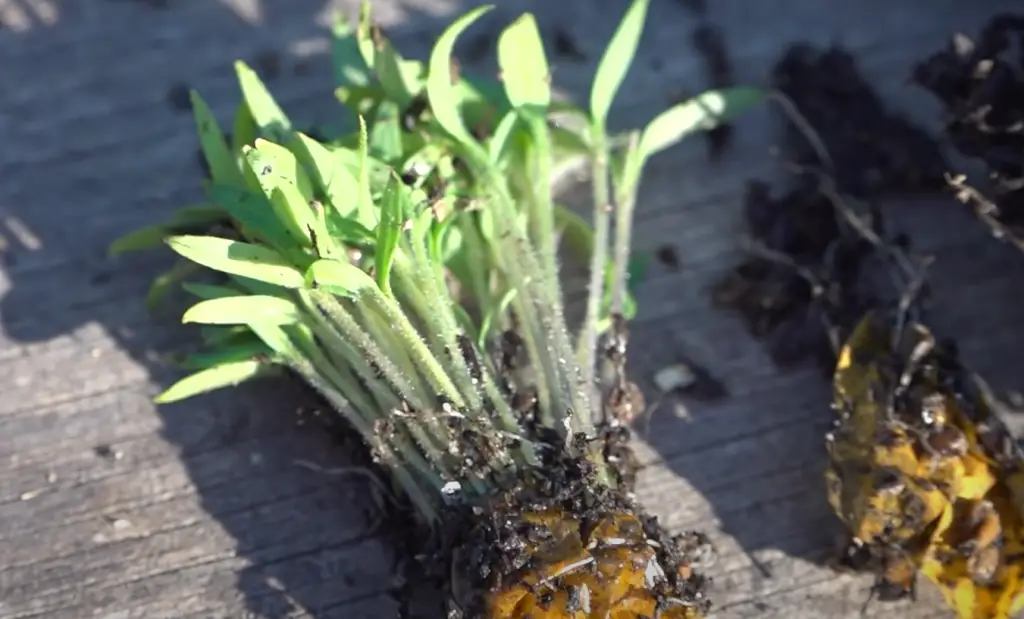
Overall, adding tomatoes to your diet can have numerous health benefits and is a great way to get more vitamins and minerals into your body [1].
Which Tomatoes Should You Choose At The Supermarket And Why?
Determinate Vs Indeterminate Tomato Plants And Does It Matter?
When it comes to selecting tomatoes at the supermarket, there are a few things to consider. The most important is whether you should choose determinate or indeterminate tomato plants.
Determinate tomatoes are varieties that grow to a certain height and size before they stop growing any larger, usually producing one large harvest. These are ideal for container gardening because they will not take up too much space in your garden or patio area, and their fruits will mature at the same time so you can enjoy them all at once!
Indeterminate tomatoes are different; these plants keep growing and produce multiple harvests of fruit throughout the season. They are often preferred for large gardens where space is not an issue.
Both types of tomatoes can be found in supermarkets and other retailers, so you should not have trouble finding either one.
When choosing determinate tomatoes, look for varieties that produce large fruits with thick walls and bright colors. These tomatoes tend to have more flavor than their indeterminate counterparts because they ripen all at once on the plant instead of over time. On the other hand, indeterminate tomatoes typically produce smaller fruits with thin skins; the flavor can vary depending on when they are picked.
Heirloom Tomatoes And Do You Want Them?
Another factor to consider when choosing tomatoes at the supermarket is whether you want heirloom or modern varieties. Heirloom tomatoes are open-pollinated varieties that have been passed down for generations and tend to be more flavorful than their modern counterparts. On the other hand, modern tomato varieties are typically bred to produce higher yields with firmer fruits that can stand up to shipping better than heirlooms.
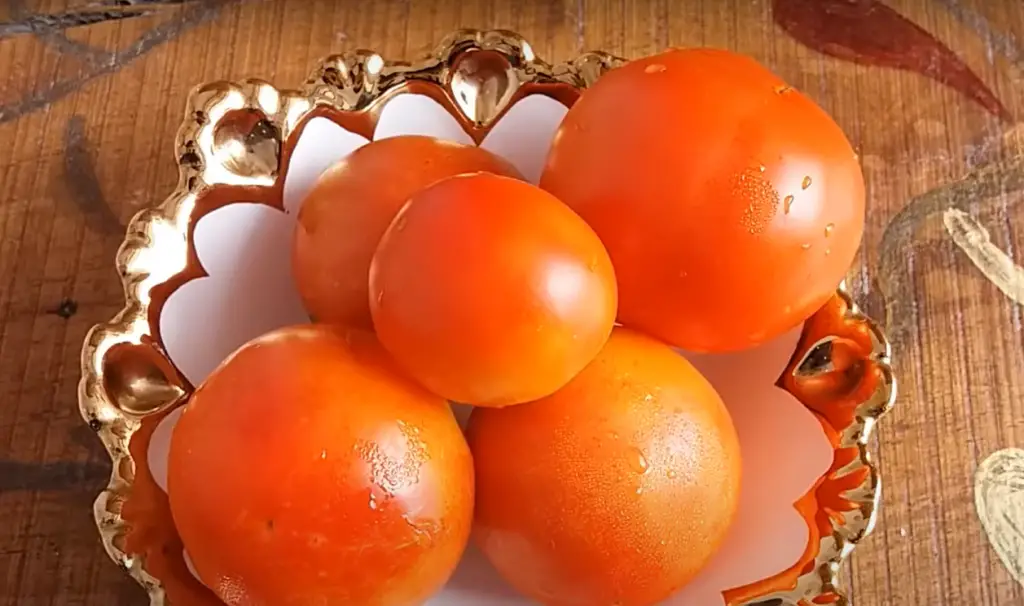
When choosing between heirloom and modern varieties, it is important to keep in mind what you will be using them for. If you plan on eating your tomatoes fresh as part of a salad or sandwich, then an heirloom variety may be best as they usually have more flavor. However, if you plan on cooking with them or canning them, then a modern variety may be better suited as they tend to have firmer fruits that will hold up better during the cooking process.
Hybrid Tomatoes To Be Sought Or Avoided?
Finally, you should also consider whether or not you want to purchase hybrid tomatoes.
While hybrid tomatoes can offer certain advantages over their non-hybrid counterparts, it is important to remember that they may not be as flavorful or nutritious as heirloom varieties.In conclusion, when choosing which tomatoes to buy at the supermarket, there are a few things to consider such as whether you want determinate or indeterminate plants, heirloom or modern varieties, and hybrid or non-hybrid fruits.
Harvesting Seeds from a Ripe Tomato: The Preferred Method
Step 1: Pick the right tomato
When harvesting tomato seeds, it is important to choose a ripe tomato that has been allowed to fully mature. Avoid tomatoes that are still green or overly soft and mushy.
Step 2: Cut the Tomato
Once you have chosen your tomato, cut it in half crosswise and scoop out the seeds with a spoon. Be careful not to damage any of the material around the seeds as this can cause them to be ruined.
Step 3: Separate Seeds from Pulp
Place all of the tomato pulp, juice, and seeds into a bowl or jar filled with water.
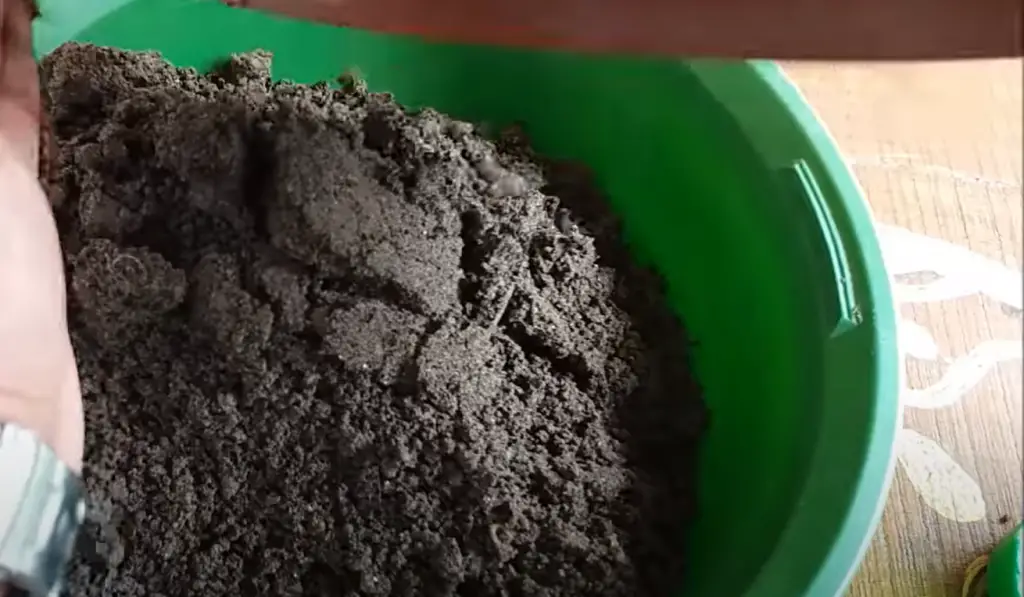
Gently stir them together so that the lighter parts will float to the top while heavier particles sink downwards. Use a spoon or other utensil to remove any of the excess pulp or material that is floating around.
Step 4: Fermentation
Set the bowl or jar aside and let it sit for 2-3 days. This process is known as fermentation and helps to break down any remaining pulp that may be attached to the seeds.
Step 5: Rinse Seeds
After the fermentation period has passed, strain off any remaining liquid from the seed mixture. Then rinse them in a colander under cool running water to remove any remaining bits of pulp or debris.
Step 6: Dry Seeds
Spread out the tomato seeds on a paper towel and allow them to dry for several hours or overnight before storing them away. Make sure they are completely dry before placing them into an airtight container in a cool, dry environment. Your tomato seeds will now be ready for planting in the spring [2]!
Care For Tomatoes
Tomato plants require a lot of care and attention to thrive. Here are some tips on how to properly care for tomato plants:
- Plant in well-drained soil with plenty of organic matter.
- Provide your tomato plants with at least six hours of direct sunlight every day.
- Water regularly, either by hand or using an irrigation system, but do not overwater as this can cause fungal diseases such as root rot.
- Prune and stake to avoid disease caused by overcrowding and overbearing branches.
- Control weeds around the base of the plant, as they compete for essential nutrients and moisture.
- Fertilize your tomato plants once a month during the growing season with a balanced fertilizer.
- Avoid planting tomatoes near potatoes or fennel as these plants can transfer diseases.
- Inspect your tomato plants for signs of pests and disease regularly and take appropriate action if necessary.
- Harvest your tomatoes when they are ripe to ensure the best flavor.
- Rotate where you plant tomatoes each year, as this will help reduce the chances of soilborne diseases developing over time.

Follow these tips to ensure your tomato plants stay healthy and productive. With proper care, you can enjoy a bountiful harvest of delicious tomatoes for years to come [3].
Must-Know Tips for Growing Tomatoes Indoors
Strong, Bright Light is Essential
Tomatoes need at least six to eight hours of bright light each day in order to thrive. If you don’t have access to a lot of sunlight, invest in grow lights that mimic the intensity and spectrum of natural sunlight. As plants grow, make sure to adjust your lights so they stay about 12 inches above the top of the plant. This will help ensure an even distribution of light throughout the entire tomato plant canopy.
Provide Support for Your Tomato Plants
Tomato plants tend to be tall and rangy when grown indoors, as there is no wind or other elements outside that can provide support for their weighty foliage and fruit. You can use stakes or cages made specifically for tomatoes to give them something sturdy to lean against.
Keep an Eye on Temperature Levels
Tomato plants prefer warm temperatures — about 70–80 degrees Fahrenheit during the day and no lower than 60 degrees at night — so make sure you keep them in a room with consistent temperature levels so they can thrive. Consider investing in a temperature monitor to ensure your tomatoes get the environment they need.
Choose Small, Compact Varieties
If you’re growing tomatoes indoors, it’s best to choose varieties that are small and compact. These types of tomatoes will better fit into the limited space of an indoor area and can be easier to manage since they don’t require as much pruning or support.
Pay Attention to Watering Needs
Tomatoes need regular watering to grow properly, but it’s important not to overwater them.
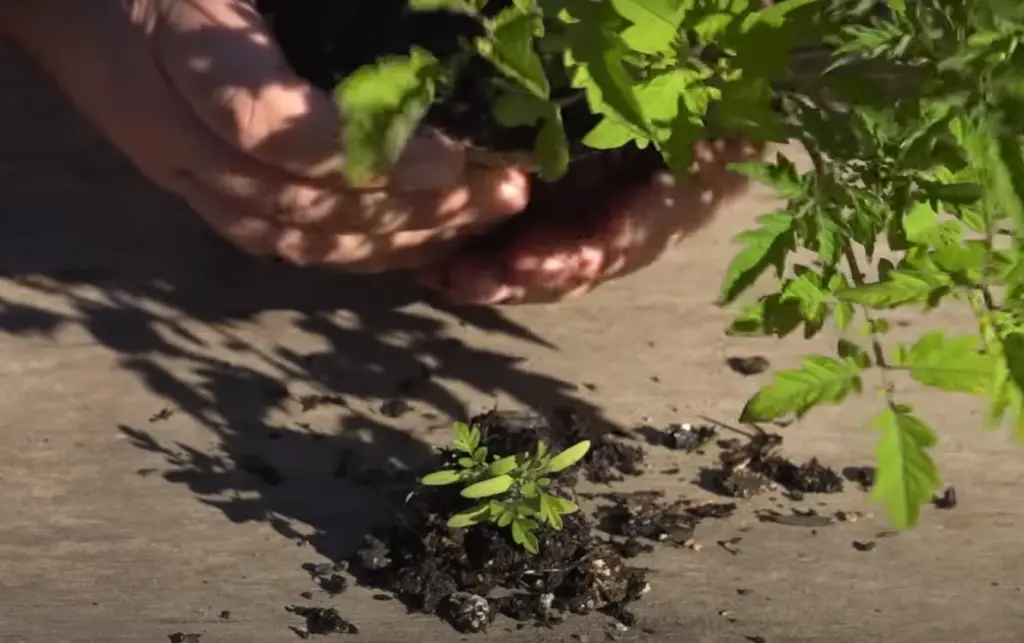
Stick your finger into the soil before deciding whether or not your plant needs water — if it feels dry, then give your tomato plants a good drink. Never let your tomatoes sit in overly-moist soil for too long, as this can lead to root rot.
Provide Heat at Seed Starting
When planting tomato seeds, you need to provide extra warmth for them to germinate. You can do this by using a seed heat mat with the thermostat or placing the pots on top of your refrigerator (which is usually warm). Once the plants have sprouted, remove any additional sources of heat so that they don’t overheat.
Fertilize as Needed
Tomato plants will benefit from regular fertilization, especially if you’re growing in containers and not in nutrient-rich soil. Feed your tomatoes every two weeks with a diluted liquid fertilizer and make sure to water thoroughly before and after application. Monitor your plant growth carefully — if it appears to be stunted or discolored, then you may need to adjust the amount or type of fertilizer you’re using.
Transplant to a Large Pot
When your tomato seedlings have sprouted, it’s important to move them into a larger pot that will give them enough room to grow. Choose a container with plenty of drainage holes and make sure the soil is moist before transplanting. After planting, water frequently and provide ample light and warmth for your tomatoes to thrive.
Find a Consistently Warm Spot
Tomatoes need a consistently warm environment to produce fruit.
With enough care and attention, you can enjoy homegrown tomatoes even if you don’t have much space or access to natural light indoors.Help with Pollination
Tomatoes are self-pollinating, but if you’re growing them indoors, it can be difficult for the pollen to reach all of the flowers. Invest in a small paintbrush and lightly brush against each flower — this will help ensure that your tomatoes get pollinated and produce healthy fruit.
Harvest Tomatoes When Ready
Once your tomatoes are ripe, harvest them quickly and store them at room temperature in a dry place.

Make sure to check your tomato plants daily during the harvesting season so that none of the fruits get overripe or rot on the vine. Enjoy the sweet taste of homegrown tomatoes with pride [4]!
Some popular tomatoes recipes
Tomatoes are incredibly versatile and can be used in a variety of recipes, from salads to pasta sauces. Here are some popular tomato-based recipes:
- Caprese Salad – This fresh salad is made with tomatoes, mozzarella cheese, basil, and olive oil. It’s simple to make and very tasty!
- Baked Eggs with Tomatoes – A delicious breakfast dish that’s ready in under 30 minutes! The combination of eggs baked in tomato sauce is sure to please even the pickiest eaters.
- Spaghetti with Tomato Sauce – One of the most iconic Italian dishes, spaghetti with tomato sauce is an easy meal to make for your family or friends. Add a bit of garlic and oregano for extra flavor!
- Grilled Eggplant and Tomato Salad – A healthy side dish that’s perfect for summer barbecues. Simply grill eggplants and tomatoes, then mix them with olive oil and herbs to make this delicious salad.
- Creamy Tomato Soup – This creamy soup is made with fresh tomatoes, cream, butter, and herbs. It’s a comforting meal that can be enjoyed all year round!
- Vegetable Lasagna – Layer together layers of sliced tomatoes, vegetables, cheese, and pasta sheets to create this hearty lasagna dish. Top it off with your favorite tomato sauce for an added bit of flavor!
- Stuffed Tomatoes – If you’re looking for a delicious appetizer recipe, try making stuffed tomatoes! Fill them with your favorite ingredients, such as cheese and herbs.
- Roasted Tomatoes – An easy way to make use of the abundance of tomatoes in your garden. Simply toss cut-up tomatoes with olive oil, salt, and pepper before roasting in the oven until golden brown.
- Tomato Fritters – A delicious snack or side dish that can be served on its own or with a dipping sauce. All you need is some tomato puree, flour, spices, and an egg to create this tasty treat!
- Gazpacho Soup – A classic Spanish soup made from raw vegetables blended and typically served cold. You can also add cooked tomatoes for an added flavor boost!
No matter what the recipe, tomatoes are a great addition to any dish, adding a pop of flavor and color. Enjoy experimenting with recipes featuring this delicious fruit!
FAQ
How do you grow tomatoes from leftover tomatoes?
Growing tomatoes from leftover tomatoes is easy. Start by washing and drying the tomato, then cut it into two or three pieces, making sure to leave some of the core attached. Plant each piece in a pot with rich soil mix and water well. Place them in an area that gets plenty of sunlight and keep the soil damp but not soggy. As the tomato grows, you can transplant it outdoors into your garden or container when there is no chance of frost. With proper care and attention, you’ll soon enjoy delicious homegrown tomatoes!
Can I use the seeds from a tomato to plant?
Yes, you can use the seeds from a tomato to plant. Start by scooping out the seeds from the flesh of a ripe tomato and putting them in a damp paper towel or container. Allow the seeds to dry overnight before planting them in moist soil, about an inch deep. Place your seedlings in an area that gets plenty of sunlight and keep the soil moist until they have grown into healthy plants. With proper care and attention, you’ll soon be harvesting homegrown tomatoes!
What kind of fertilizer should I use on my tomato plants?
For best results, it’s important to choose a fertilizer specifically tailored for tomatoes. Tomatoes need a balanced combination of nitrogen, phosphorus, and potassium fertilizers as well as minor elements like calcium and magnesium.
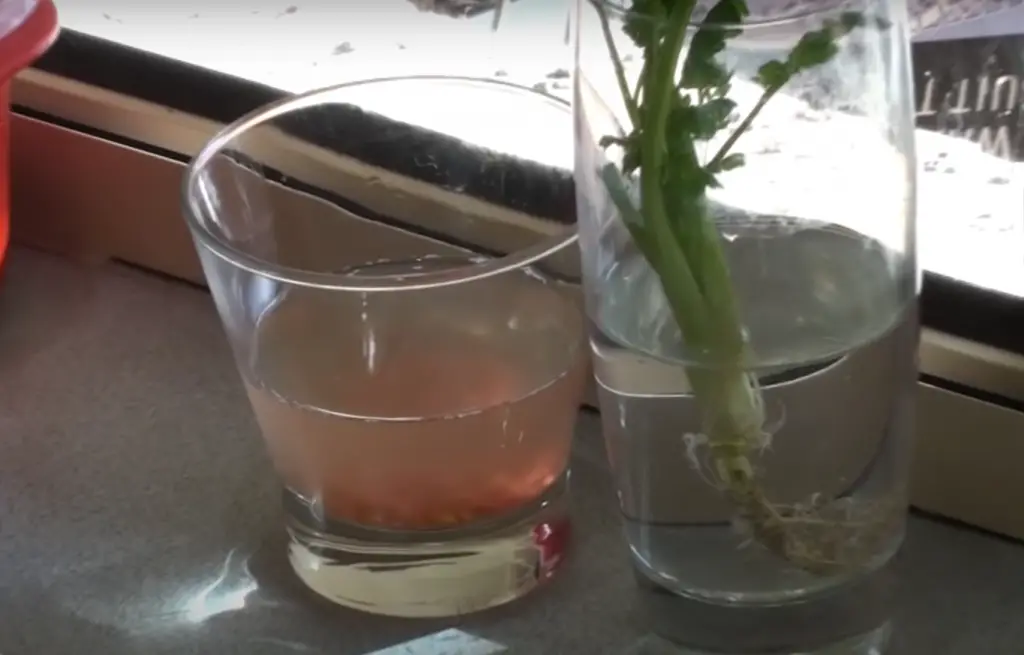
Choose an organic fertilizer for best results, or look for a commercially available tomato fertilizer that contains all the essential nutrients to keep your plants healthy and productive.
How often should I water my tomato plants?
Tomato plants need consistent watering to produce healthy fruits. You should aim to give your tomatoes about an inch of water each week when there is no rain. Try to water at the same time every day so your plants can become accustomed to it, and check the soil often for moisture levels. If the soil feels dry just beneath the surface, it’s time to give your tomatoes another drink!
Can you grow tomatoes from F1 seeds?
Yes, you can grow tomatoes from F1 seeds. F1 hybrid tomatoes are bred for higher yields and disease resistance, making them ideal for commercial growers. To start growing tomatoes from F1 seeds, begin by soaking the seeds in warm water overnight to help speed up germination. Plant your seeds in moist soil about an inch deep, then place them in an area with plenty of sunlight and keep the soil damp but not soggy. With a little bit of care and attention, you’ll soon be enjoying delicious homegrown tomatoes!
How ripe do tomatoes need to be for seeds?
Tomatoes need to be fully ripe before you extract the seeds. Look for tomatoes with deep red or orange skin that are soft to the touch. Slice your tomato in half and scoop out the seeds, taking care not to damage them. Allow the seeds to dry overnight before planting them in moist soil about an inch deep. With proper care and attention, you’ll soon have delicious homegrown tomatoes!
How to use tomato trellis?
Tomato trellises are a great way to support your growing plants and improve their yields. To use a tomato trellis, choose one that’s sturdy enough to hold the weight of your tomatoes as they grow. Place it in an area with plenty of sunlight and anchor it securely into the soil. As your tomatoes begin to grow, guide them along the trellis so they can climb up, and ensure each plant has its own section for support. With regular pruning and proper care, you’ll soon be harvesting delicious homegrown tomatoes!
Why do you need to prune tomato plants?
Pruning your tomato plants is important for several reasons. Pruning helps promote air circulation, which helps reduce the risk of disease and fungal infections. It also encourages the growth of new shoots, resulting in larger yields. In addition, pruning can help keep your tomatoes from becoming overgrown and unruly, making them easier to manage. Finally, it can make harvesting much easier since you won’t have to search through all the foliage for ripe fruits! With a little bit of care and attention, you’ll soon be enjoying delicious homegrown tomatoes!
Why is the soil important for growing tomatoes?
The soil plays an important role in growing healthy and productive tomato plants. It’s important to choose a potting mix or garden soil that has good drainage, as standing water can cause root rot. The soil should also be rich in nutrients to support the growth of your plants, so adding compost or fertilizer is recommended. Finally, keep your soil lightly moist by watering regularly but avoiding overwatering.
How to choose the right tomatoes for your garden?
When choosing tomatoes to grow in your garden, consider what you will be using them for. If you’re looking for slicing tomatoes, pick varieties such as Beefsteak or Big Boy that produce large fruits. For canning and cooking, Roma or Plum tomatoes are ideal since they have higher concentrations of flavorful juices. Finally, Cherry or Grape tomatoes are perfect for snacking on fresh! With a little bit of research and some trial and error, you’ll soon find the perfect tomato varieties for your garden.
How do I know when my tomatoes are ripe?
When it comes to harvesting homegrown tomatoes, timing is everything. To determine ripeness, look for deep red or orange skin that is soft to the touch. Gently squeeze your tomatoes and check for a slight give, which indicates they’re ready to be picked. You can also taste them if you want to make sure they have the right balance of sweetness and acidity. With proper care and attention, you’ll soon be enjoying delicious homegrown tomatoes!
How to maintain tomato plants?
Maintaining your tomato plants is essential for long-term success. Keep the soil lightly moist by watering regularly, but avoid overwatering as this can cause root rot. Make sure to provide adequate support with a trellis or stakes and prune off any dead leaves or stems. Finally, fertilize your plants every few weeks to give them an extra boost of nutrients.
How to use tomato harvest?
Once you’ve harvested your homegrown tomatoes, you can enjoy them in a variety of ways. Serve slices on sandwiches or salads for a midday snack, dice up some Roma tomatoes for homemade pasta sauce, or roast cherry tomatoes with olive oil and garlic for an easy side dish. With so many delicious possibilities, it’s no wonder why homegrown tomatoes are the star of any garden!
With a little bit of patience and care, you’ll soon be enjoying the delicious fruits of your labor – hearty, juicy homegrown tomatoes! Whether you’re slicing them up for sandwiches or roasting them with herbs and spices, there’s nothing quite like the taste of fresh produce from your own backyard.
Useful Video:Grow Tomatoes from Tomatoes (Easiest Method Ever With Updates)
Conclusion
Growing tomatoes from store-bought tomatoes is a simple and rewarding activity that can be done in any home. The process requires minimal supplies, costs little to nothing, and the reward of having fresh tomatoes for consumption or as part of a garden is well worth the effort. Growing your own tomatoes allows you to have complete control over their development and harvesting timeline, giving you access to freshly picked tomatoes whenever you need them. With some dedication and patience, anyone can grow store-bought tomatoes with success!
References:
- https://www.webmd.com/food-recipes/ss/slideshow-tomato-health-benefits
- https://www.gardeningknowhow.com/edible/vegetables/tomato/saving-tomato-seeds.htm
- https://www.pennington.com/all-products/fertilizer/resources/the-well-fed-garden-a-how-to-guide-for-growing-tasty-tomatoes
- https://www.bhg.com/how-to-grow-tomatoes-indoors-6836149










Leave a Reply
View Comments